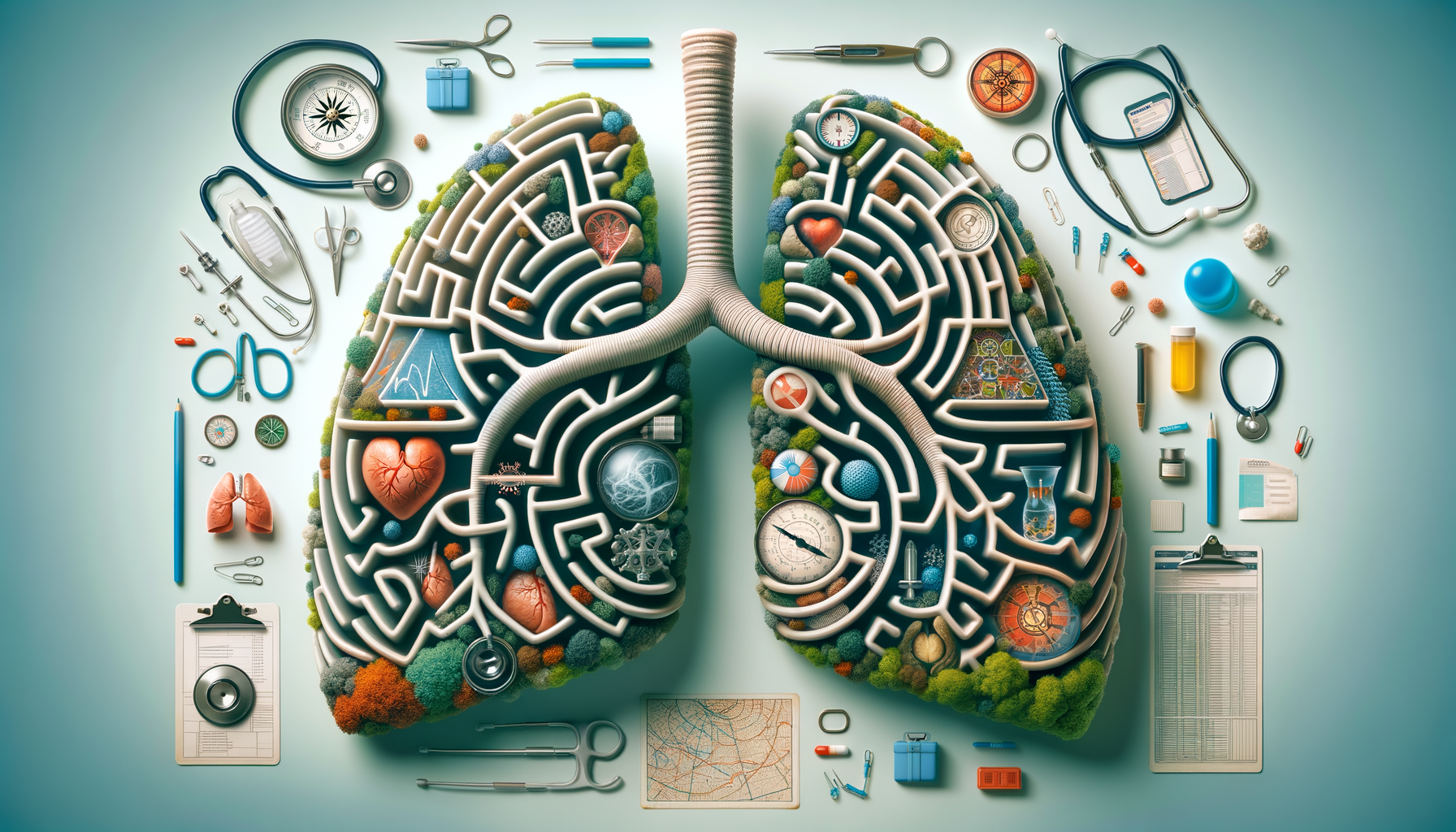Understanding Lung Cancer: An Overview
Lung cancer, a formidable adversary, stands as one of the most common and deadliest forms of cancer worldwide. It primarily affects the respiratory system, where malignant cells form in the tissues of the lung. The disease is broadly categorized into two main types: non-small cell lung cancer (NSCLC) and small cell lung cancer (SCLC), each with distinct characteristics and treatment approaches.
Non-small cell lung cancer is the more prevalent type, accounting for approximately 85% of all cases. It includes subtypes such as adenocarcinoma, squamous cell carcinoma, and large cell carcinoma. On the other hand, small cell lung cancer, although less common, tends to grow and spread more quickly.
Several risk factors contribute to the development of lung cancer, with smoking being the most significant. However, non-smokers are not immune. Exposure to radon gas, asbestos, and other carcinogens, as well as genetic predispositions, also play a role. Early detection is crucial, as it increases the chances of successful treatment. Symptoms such as persistent cough, chest pain, and unexplained weight loss should prompt medical consultation.
Understanding the intricacies of lung cancer is the first step in combating it. Awareness and education empower individuals to make informed decisions about prevention, screening, and treatment options.
Diagnosis and Staging: A Critical Process
The journey of lung cancer diagnosis begins with a series of tests and evaluations to determine the presence and extent of the disease. Diagnostic procedures may include imaging tests like chest X-rays and CT scans, which help visualize abnormalities in the lungs. If suspicious areas are detected, a biopsy is often performed to confirm the diagnosis by examining tissue samples under a microscope.
Once diagnosed, staging the cancer is a critical step that guides treatment planning. The stage of lung cancer indicates how far the disease has spread. For NSCLC, stages range from I to IV, with Stage I being localized and Stage IV indicating metastasis to other parts of the body. In SCLC, staging is simplified into two categories: limited stage and extensive stage.
Accurate staging relies on various diagnostic tools, including PET scans and MRI, which provide detailed images of the body’s structures. Additionally, mediastinoscopy, a procedure to examine the central part of the chest, might be employed to assess lymph node involvement.
Understanding the stage of lung cancer is paramount, as it directly influences the treatment strategy. A comprehensive diagnosis and staging process ensure that patients receive the most appropriate and effective care tailored to their specific condition.
Treatment Options: Navigating the Path
The treatment landscape for lung cancer is vast and continually evolving, offering a range of options tailored to the type and stage of the disease. For early-stage NSCLC, surgical resection, where the tumor is physically removed, is often the preferred choice. This may be followed by adjuvant therapy, such as chemotherapy or radiation, to eliminate any remaining cancer cells.
For advanced stages, a combination of therapies is typically employed. Chemotherapy, a systemic treatment, uses drugs to target and destroy cancer cells throughout the body. It is often used in conjunction with radiation therapy, which focuses high-energy rays on the tumor to shrink it.
In recent years, targeted therapies and immunotherapy have emerged as promising treatments for certain lung cancer subtypes. Targeted therapies interfere with specific molecules involved in cancer cell growth and survival, offering a more precise approach. Immunotherapy, on the other hand, harnesses the body’s immune system to recognize and attack cancer cells, showing remarkable efficacy in some patients.
Choosing the right treatment involves a collaborative approach between the patient and a multidisciplinary team of healthcare professionals. Factors such as the cancer’s genetic profile, the patient’s overall health, and personal preferences all play a role in determining the optimal treatment plan.
The Role of Clinical Trials: Pioneering New Frontiers
Clinical trials are at the forefront of advancing lung cancer treatment, offering patients access to cutting-edge therapies and contributing to the broader understanding of the disease. These research studies test new drugs, combinations of treatments, or innovative approaches to determine their safety and effectiveness.
Participating in a clinical trial can provide several benefits. Patients gain early access to new treatments that are not yet widely available, and they receive close monitoring and care from a dedicated research team. Moreover, by contributing to clinical research, participants play a crucial role in shaping future cancer therapies.
There are different phases of clinical trials, each with specific goals. Phase I trials focus on assessing the safety and dosage of a new treatment. Phase II evaluates its effectiveness, while Phase III compares it to standard treatments to determine its relative efficacy. Finally, Phase IV trials occur after a treatment has been approved, monitoring its long-term effects and safety.
Patients considering clinical trials should discuss the potential risks and benefits with their healthcare providers. Informed decisions about trial participation can lead to new hope and possibilities in the fight against lung cancer.
Living with Lung Cancer: Support and Resources
Living with lung cancer presents numerous challenges, both physically and emotionally. However, a wealth of resources and support systems are available to assist patients and their families throughout their journey. Support groups, whether in-person or online, offer a platform for sharing experiences, advice, and encouragement.
Comprehensive care extends beyond medical treatments, encompassing nutritional guidance, mental health support, and palliative care. Nutritionists can help tailor diets to support treatment and recovery, while mental health professionals provide counseling to address anxiety, depression, and stress.
Palliative care, an essential component of lung cancer management, focuses on improving quality of life by alleviating symptoms and providing holistic support. It can be integrated at any stage of the disease, not just at the end of life, and works alongside curative treatments.
Empowering patients with knowledge and resources enables them to navigate their cancer journey with resilience and hope. By fostering a supportive environment, individuals can face the challenges of lung cancer with strength and determination.








